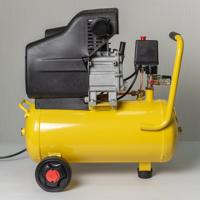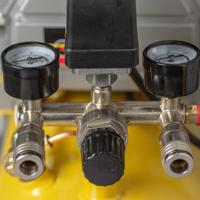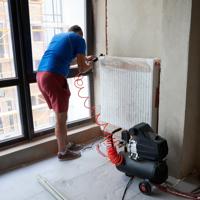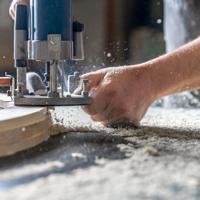Air tools, also known as pneumatic tools, are beloved for their efficiency and power. Anyone from hobbyists to seasoned professionals can find great utility in these versatile devices. The goal of this guide is to help you understand how to use air tools effectively and safely.
Understanding Air Tool Basics
Air tools operate on compressed air rather than electricity. This offers several advantages, such as fewer moving parts and less maintenance. However, getting started with them requires some initial knowledge:
- Air Source: You need an air compressor to power your tools. Air compressors come in various sizes and capacities. For most small home projects, a portable air compressor will suffice. See our guide on the best portable air compressors for DIY projects.
- Couplers and Connectors: These enable you to connect the air tool to the compressor. Make sure the coupler types on your tool and air hose are compatible. For more information on couplers and fittings see our guide.
- Pressure Ratings: Different tools require varying levels of air pressure (measured in PSI). Ensure your compressor can deliver the right amount for each tool. For more information on choosing the right compressor, see our Buying Guides.
Setting Up Your Air Tool
-
Select the Right Compressor: Choose a compressor that matches the PSI requirements of your tool. Portable air compressors are ideal for tools like nail guns or airbrushes.
-
Connect the Air Hose: Attach one end of the air hose to your compressor’s outlet and the other to your tool using compatible connectors. Remember to review our Safety Tips before beginning any project.
-
Adjust Pressure Settings: Before use, set the compressor to the recommended PSI for your tool. Over-pressurizing can damage tools and lead to unsafe conditions.
-
Test for Leaks: After connecting everything, briefly run the compressor to check that there are no air leaks in the system. Listen for hissing or use a soapy water solution around connections to identify escaping air. For more comprehensive maintenance tips, see our Air Compressor Maintenance Guide.
Operating Your Air Tool
-
Safety First: Always wear appropriate personal protective equipment (PPE) such as goggles and gloves. Noise levels can be high, so use ear protection as needed.
-
Using the Tool: Turn on the air compressor. Allow it to build up pressure, then use the tool as intended. For example, squeeze the trigger on a pneumatic nailer to drive a nail into wood effortlessly.
-
After Use: Depressurize your system by turning off the compressor and safely releasing air from the tool. This prevents accidental activation.
Maintaining Your Air Tools
Proper maintenance extends the life of your air tools, especially if you follow essential air tool maintenance tips.
- Regular Lubrication: Keep your air tools lubricated to reduce internal friction. A few drops of pneumatic tool oil before each use can help.
- Check for Wear: Regularly inspect hoses and connectors for wear and tear. Replace any components that show signs of damage. See our Maintenance Tips for more information.
- Store Safely: Disconnect and store tools in a clean, dry place to avoid rust and corrosion.
For detailed technical guidance and recommendations, Angus Air Tools Guide provides a wealth of information that can deepen your understanding of air tool care.
Air tools can be incredibly effective assets in your toolkit. With careful attention to setup, operation, and maintenance, you can unlock their full potential safely. Enjoy exploring what air-powered magic you can create in your workshop or on your next task!



